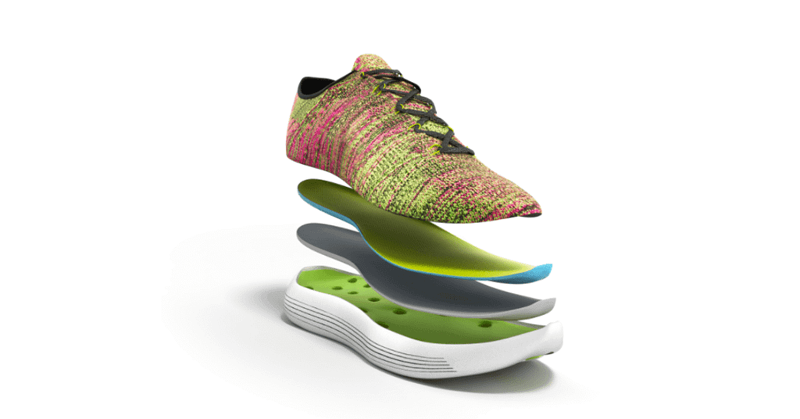
Every year the number of manufacturers of running shoes increases, new technologies, foam materials, carbon plates appear. Some brands have 20 or even 30 types of running shoes in their product lines. With terms like drop, pronation, underfoot, stabilization, and membrane becoming common, the answer to “how to choose best running shoe brand” can be very complicated. In this article we conduct running shoes reviews in detail.

Anatomy of good running shoes
All running shoes have roughly the same architecture:
1. The outsole or tread is the part of the sneaker that makes contact with the surface. Usually made of rubber, it may also have additional graphite inserts or metal studs to improve traction.
2. The midsole is a thick layer of foam that provides cushioning. More expensive sole materials offer better energy return, so most manufacturers have a range of foams where the more expensive the sneaker, the better the cushioning. Depending on the drop of the shoes (e.g. low drop running shoes) the thickness of midsole varies.
3. Carbon plate (if available) - an additional element that enhances the shock absorption properties of the sole. Some manufacturers, like Adidas, use tubes instead of a solid plate. Carbon plates are mainly used in competition shoes but can also be found in some training models.
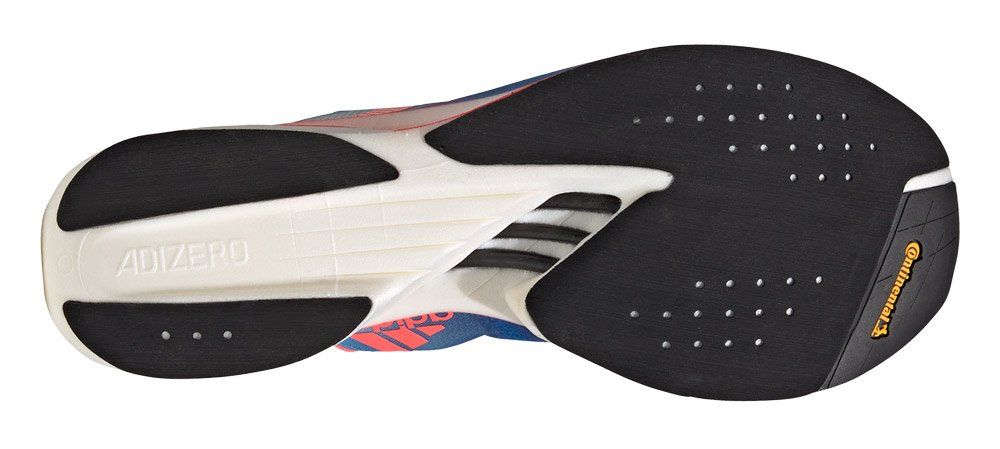
4. Midsole (if carbon plate is present) - the layer of foam that is located between the carbon plate and the insole. May be made of the same foam material as the outsole or a more resilient one.
5. The upper is a synthetic material that cushions and locks the foot in place. Can be woven from yarns or molded. The texture and density of the upper depends on the season, the purpose of the shoe, and the approach of the particular manufacturer.
6. Heel cup - the part of the upper that cradles the heel and Achilles. In training sneakers usually has additional elements that fix the heel and do not allow it to "walk". In competition sneakers, the support is usually minimal.
7. Lacing - a system of fixing the shoe on the foot, located above the tongue. It can be implemented in the format of classic laces, fast lacing system, BOA (instead of laces, metal cables are used, which are tightened by turning a special wheel) or zipper (for example, on winter Salomon Snowcross).
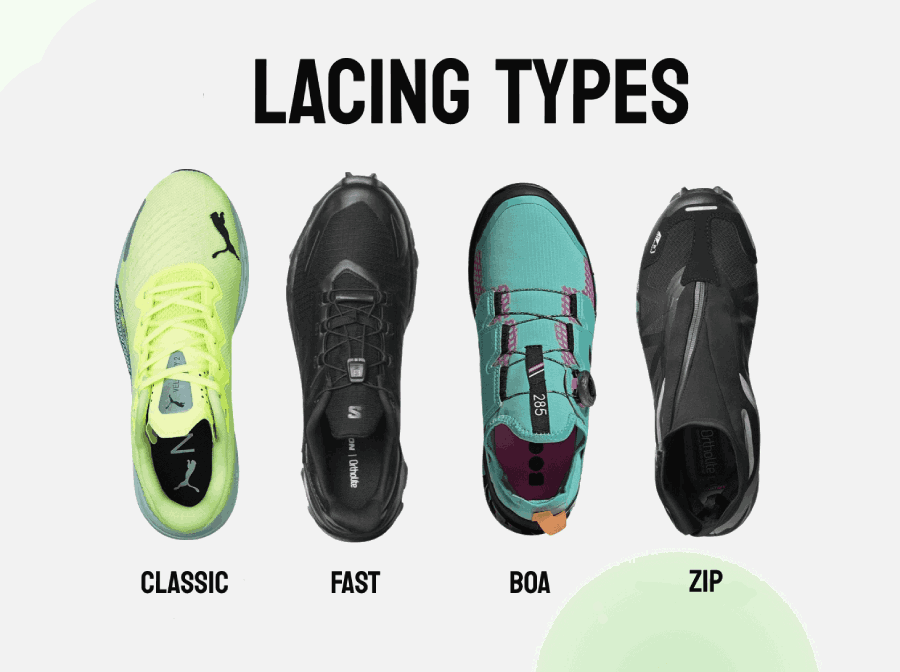
Outsole or tread
The outsole, also known as the tread, serves two main functions. First, it makes contact with the running surface (such as asphalt, ground, snow, or ice) and provides traction to maintain the runner's speed and stability. Second, it protects the outsole from wear and tear, as foam is more fragile than rubber soles.
All running shoes can be divided into two types: those designed for running on the highway and those designed for rough terrain (trail models).
In road running shoes, the tread is different. Sneakers for running on the highway (asphalt) usually have a thick layer of rubber in training models and a thin layer in competition models. The goal of training sneakers is to last as long as possible and provide optimal traction on all surfaces, so the rubber is thicker and more abrasion-resistant.
In competition good running shoes, the rubber is thin and may have additional spraying or graphite inserts for better grip on dry asphalt. Such soles wear out faster, but their task is different - to provide the best grip on dry asphalt and maximum speed during a race.
Best running shoe brand have their own rubber suppliers, along with their own names and markings for the outsoles. For example, adidas uses automotive brands - currently it's Continental, in the past it was Michelin and Goodyear. Puma has its own branding called Pumagrip.
In stability running shoes, the sole is designed unevenly. Usually, there is more rubber on the forefoot and less on the heel. This is because competition shoes are made for professional athletes, who tend to run emphasizing their forefoot.
The lifespan of the sole in competition running shoes is short, ensuring a minimal weight for the racing shoe and good grip. After running approximately 300-500 km, it is advisable to use such shoes as training shoes.

The outsole on top running trail shoes
The outsole tread on trail running shoes can be categorized into three types:
1. Mud tread: This type of tread has a depth of rubber studs up to 5 mm and features pronounced teeth. The more frequently the teeth are arranged, the better traction they provide. This design of the sole ensures good self-cleaning, allowing mud to easily fall off when transitioning onto a flat surface. In winter, this type of tread is ideal for running on viscous snow. Some examples of sneakers with mud tread include the Salomon Alphacross, Hoka Speedgoat, and Hoka Challenger.
2. Universal tread: The universal tread has a depth of rubber spikes up to 3 mm, making it suitable for various types of surfaces such as ground, soil, rocks, and dense snow. Sneakers with universal tread, such as the Salomon S/Lab Sense and Salomon Sense Ride, offer versatility in different terrains.
3. Studded shoes: These shoes feature metal spikes, providing optimal traction on dense snow and ice. Examples of sneakers with metal spikes include the Salomon Spikecross, certain models of Innov8, and Icebug.
For running on ice, Saucony offers the Peregrine Ice+ model, which has a regular rubber tread combined with abrasive sandpaper-like overlays that provide additional traction kinda of motion control shoes. This model is suitable for winter running in urban areas where the asphalt may not be well cleaned.
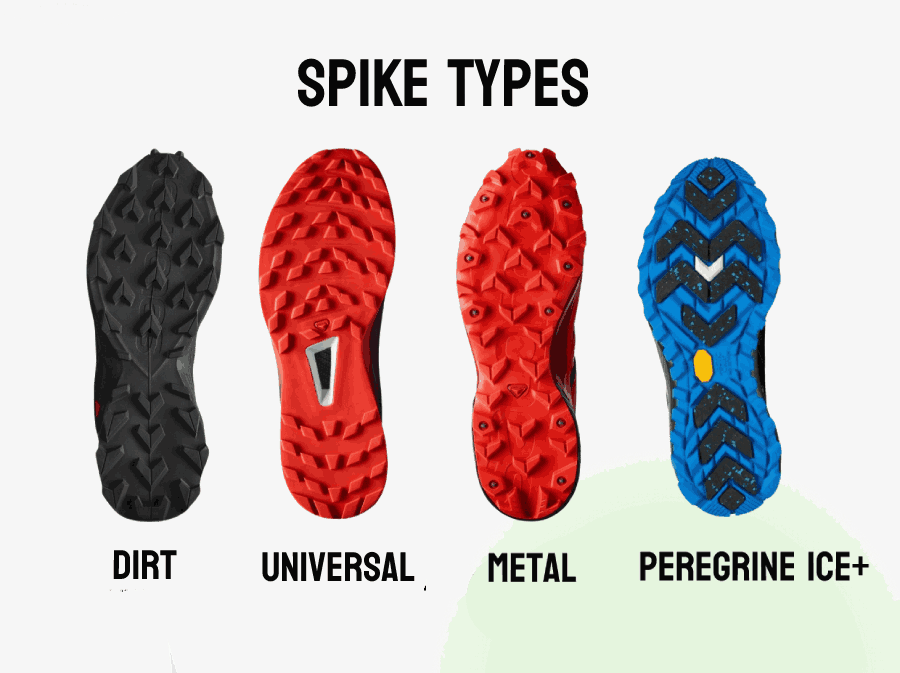
Midsole / Foam
Athletic shoe manufacturers are constantly on the lookout for new foams that are lighter and more resilient. Since the release of the first Nike Vaporfly in 2017, the most advanced on the market is considered to be polyetheretherblocamide (PEBA or PEBA), which is produced by the French company Arkema under the brand name Pebax.
PEBA is used in the most expensive and fastest sneakers - marathoners with carbon fiber plates:
- Nike has PEBA branded ZoomX and uses it in the Alphafly and Vaporfly models;
- Saucony labels PEBA as Pwrrrun PB - Endorphin Pro and Endorphin Elite models;
- ASICS labels the foam FLYTEFOAM BLAST TURBO and uses it in the Metaspeed Sky and Metaspeed Edge;
- Puma's Deviate Nitro Elite model is labeled Nitro Elite.
The main disadvantage of PEBA is its limited life span. In top marathon shoes - it is 300 kilometers of mileage. Then the sneakers lose part of the shock absorption and no longer give such an advantage as a new pair. Also, marathon runners use a very thin sole, which is quickly washed, which accelerates the wear of the foam.
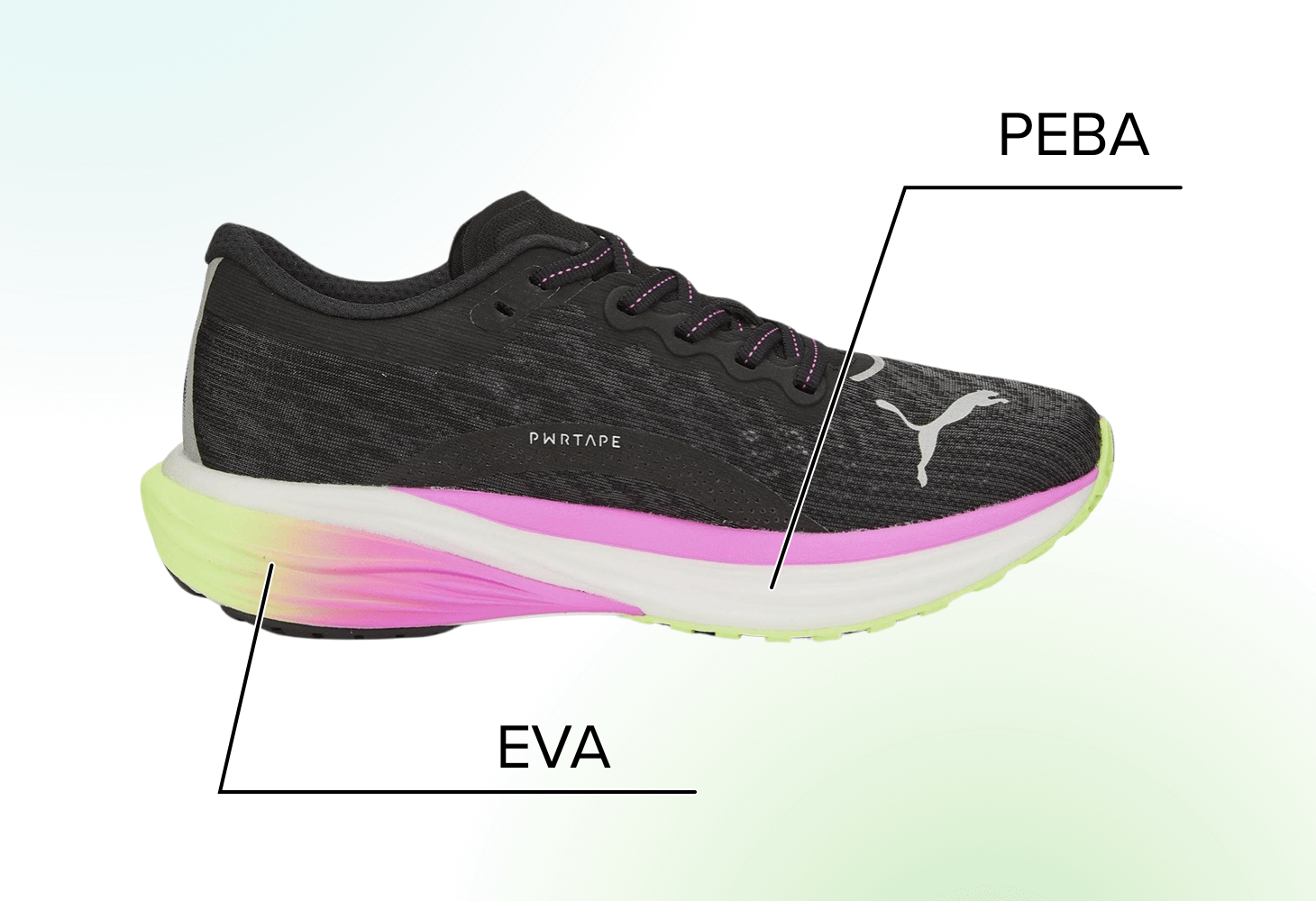
Unlike other manufacturers, adidas went its own way and uses not PEBA, but TPEE (thermoplastic polyester elastomer) material in its top sneakers, which is produced by the Chinese company Shincell. The brand name of the foam is Lightstrike Pro. It turns out to be slightly stiffer than PEBA, while being more durable.
Lightstrike Pro is used in the Adios Pro 3, Prime X, Takumi Sen, and Boston models. These are usually accepted as one of the best marathon shoes on the market.
The latest Adizero Adios Pro Evo 1 marathoners, in which Ethiopia's Tigist Assefa improved the women's marathon world record by more than two minutes, received an updated Lightstrike Pro foam - less dense and incredibly lightweight. At the same time, durability suffered: the jogging shoes turned out literally disposable.
Some manufacturers add PEBA in the form of inserts or sole layers in training and lightweight competition sneakers, making them more resilient and more budget-friendly than the upper models in the lineup:
- Nike Vomero and Fly;
- Puma Deviate Nitro.
The second most responsive material in the top running shoes is thermoplastic polyurethane (TPU or TPU), which is being phased out by PEBA but is still used in some models:
- adidas' Boost line;
- Saucony's PWRRUN+ foam - Triumph model;
- some Li-Ning models.
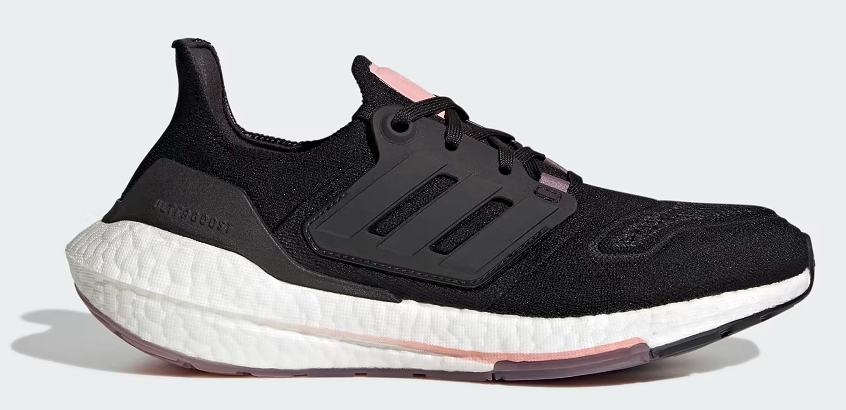
The third level of cushioning is ethylene vinyl acetate (EVA or EVA). Foam is usually used in training models. It is cheap and wear-resistant. Different manufacturers have their own names:
- Nike's React line;
- Lightstrike by adidas - models RC, SL, Duramo;
- Saucony's PWRRUN - models Kinvara, Ride, Guide;
- ASICS FF Blast - Kayano, Nimbus models;
- New Balance Fresh Foam - models More, X 880, X 1080;
- Puma's Nitro - Velocity, Liberate models.
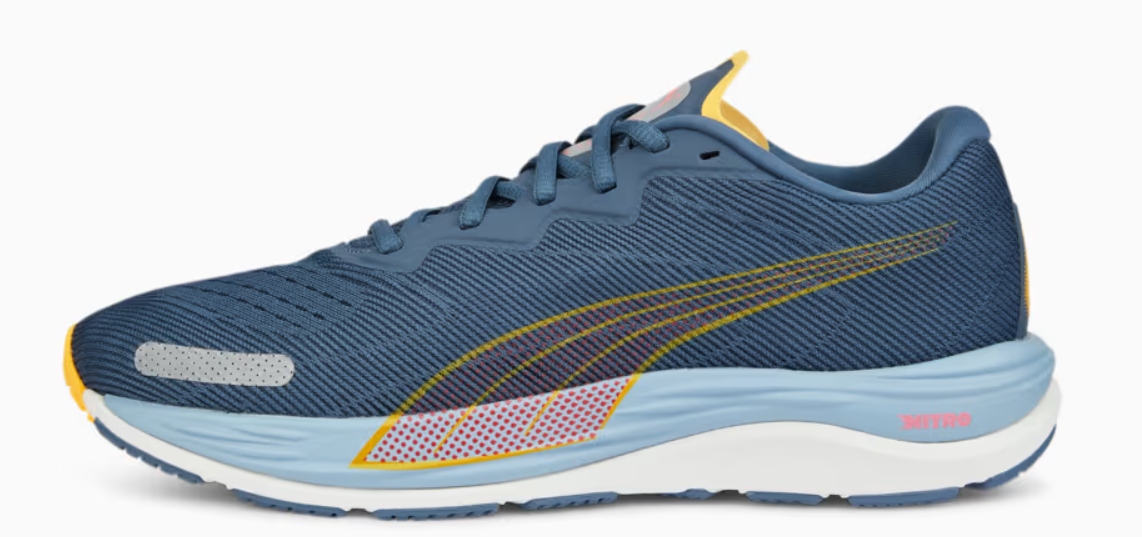
The lighter the weight of running shoes, the more resilient the foam used in them. Best long distance running shoes cost more and last longer. If you need durable sneakers for everyday jogging, don't chase after cutting-edge, expensive models. Opt for EVA foam sneakers.
Carbon plates
The carbon plate is typically made of a carbon composite material, and on its own, it does not provide additional cushioning. Instead, it works in conjunction with effective foam to create a "swing effect" that propels the foot forward. Similar to foam, the carbon plate also has a limited lifespan and loses elasticity after a certain number of steps.
Nike's innovation in their first Vapolfly model in 2017 was not just the use of new foam and carbon, but also the special shape of the carbon plate which contributed to increased running efficiency and provided a few extra seconds compared to other models.
Adidas took a different approach by using tubes instead of a traditional carbon plate. In the new Adios Pro 3 model, they have implemented an even more complex construction that permeates the entire sole.
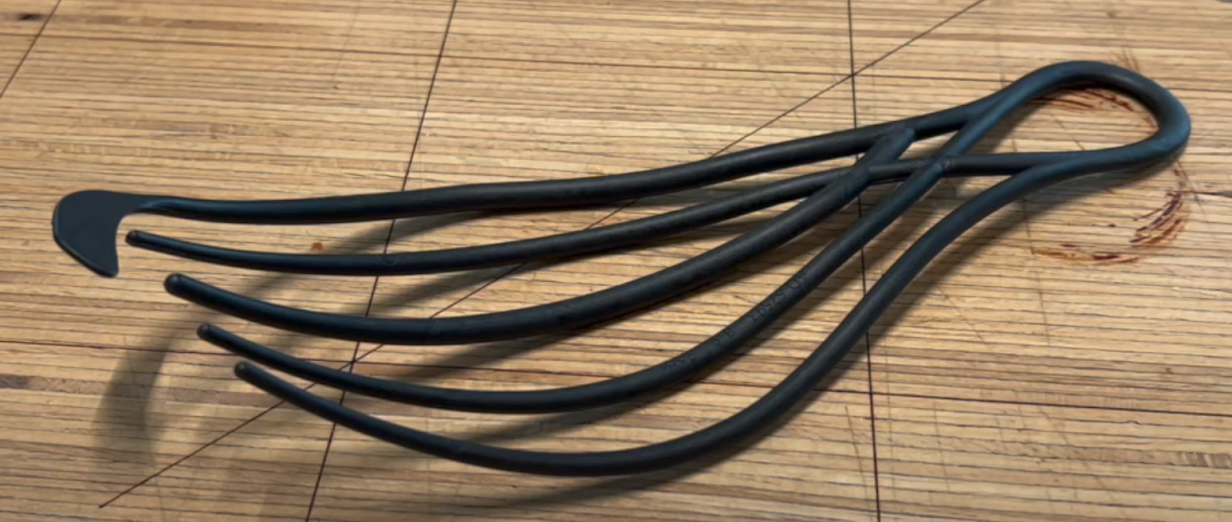
Carbon technology is not limited to expensive marathon shoes. It can also be found in training shoes such as the Puma Deviate Nitro, Nike Fly, and Hoka Bondi X. In these models, the carbon plate adds torsional rigidity to the sneakers and helps runners acclimate to the sensations they'll experience when wearing marathon shoes with a carbon plate and the highest quality foam.
Some best running shoe brands have also started incorporating carbon fiber plates into trail running shoes, allowing runners to achieve faster speeds on flat and rough terrain. Examples of such models include the Saucony Endorphin Edge, The North Face Flight Vectiv, and Nike Ultrafly.
Drop
The drop refers to the difference in height between the heel and toe of a shoe. A higher drop value, measured in millimeters, indicates that the heel is positioned higher relative to the forefoot.
As natural running, chi running, and other techniques that promote running in low drop running shoes gained popularity, there was a demand for zero drop sneakers. This led to the introduction of sneakers with the Zero Drop label, such as those from the Altra brand. Actually, best marathon shoes have zero or low drop.
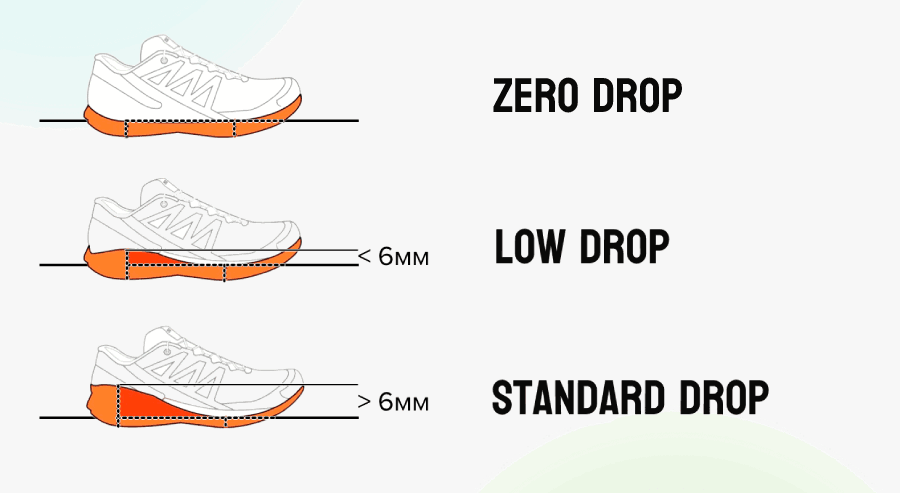
Saucony has released and continues to update models like the Kinvara, Fastwitch, and Type A with a 4mm drop. These shoes were once popular, but it was later realized that a small drop increases the risk of injury over longer distances. This is because the heel has to travel a greater distance to reach the surface, which places additional strain on the calf muscles and Achilles tendon.
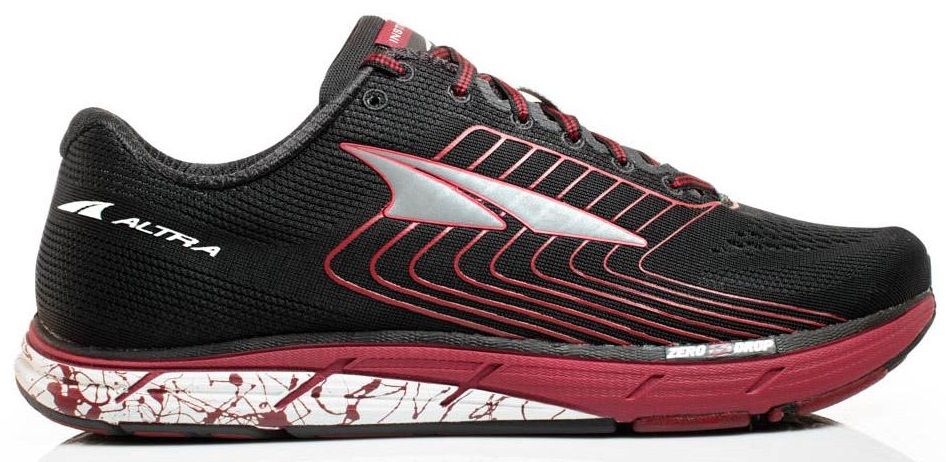
Currently, the market standard for drop is around 8-10mm, although Mizuno used to have an even larger drop of 12mm. Hoka utilizes a 5mm drop, but due to their boat-shaped outsole (Rocker technology), it is perceived as a standard 10mm drop while running. Drop variance also affect stability of running shoes.
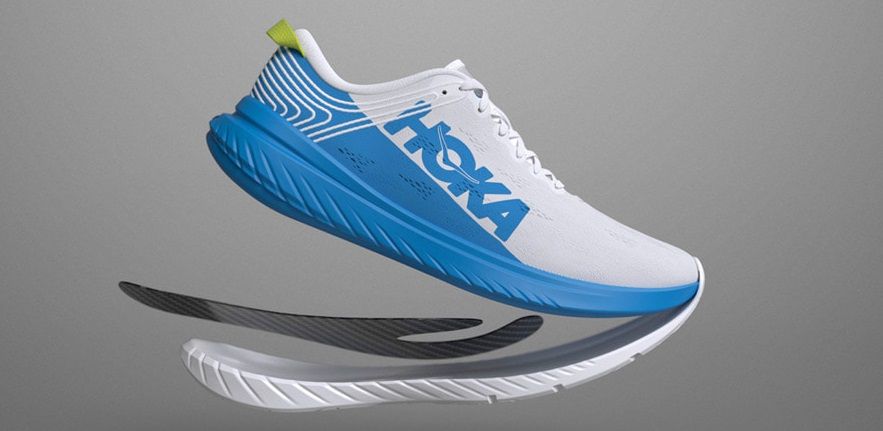
Foot support
If the pronation test reveals that the beginner has pronounced hyperpronation (inward foot stance), the salesperson may recommend best running shoes for overpronation.
For additional support of the foot, manufacturers use inserts of stiffer foam or plastic elements that provide lateral support.
Examples of best running shoes in this category:
1. DuoMax dual density foam under the arch of the foot. Used in ASICS sneakers.
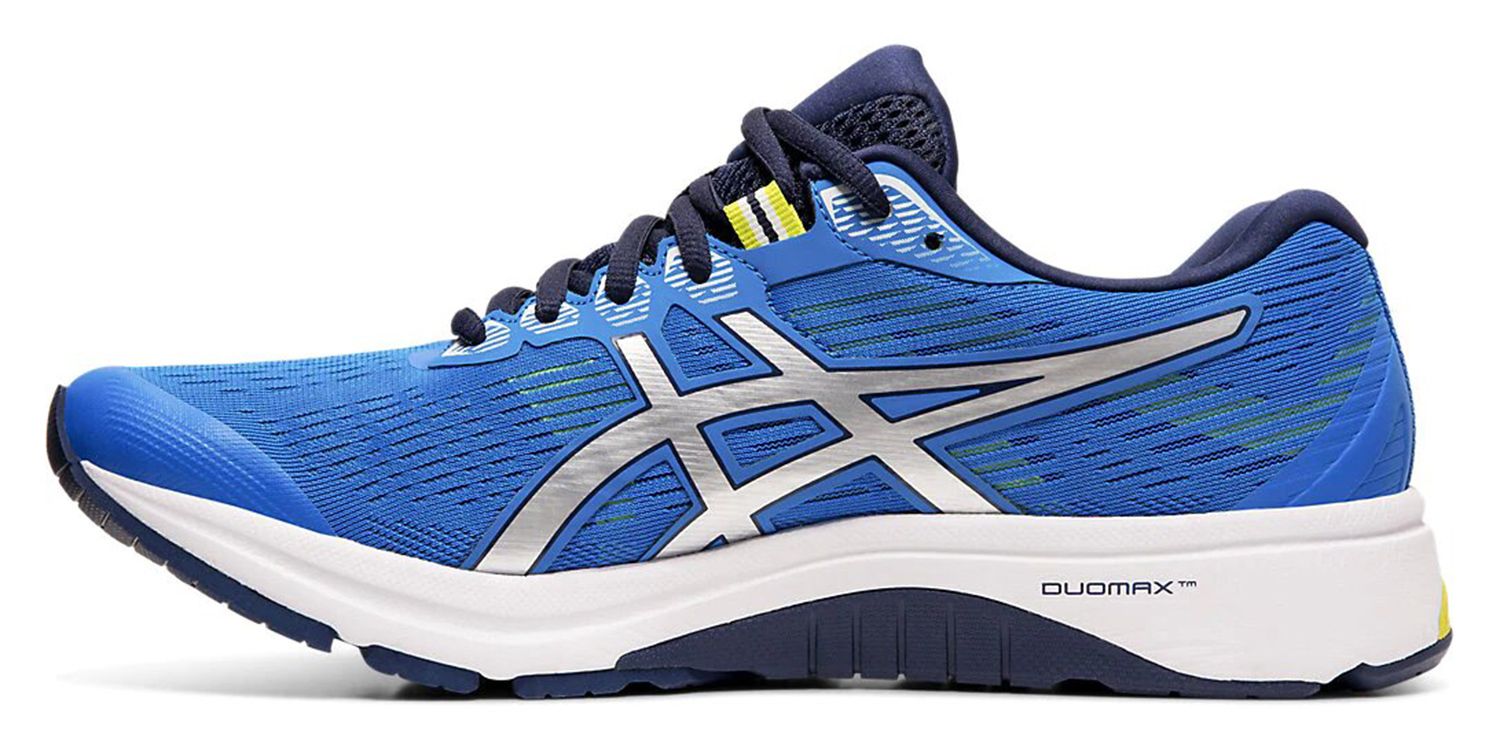
2. adidas' ST technology is a dual-density foam located on the sides of the midsole that cradles the foot on both sides. Additionally, the outsole houses a torsional stiffness system that keeps the arch from collapsing.
3. Hoka's J-frame technology. It is designed as a frame that runs along the inside of the foot and wraps around the heel.
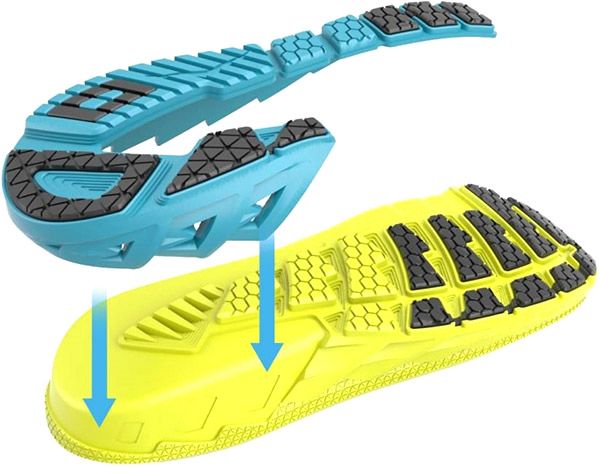
Running shoe upper
The upper of good running shoes is typically constructed from synthetic materials, with nylon being the most common choice. During the manufacturing process, nylon threads are interwoven to create a material that is both flexible and durable. Depending on the thickness and weave of the threads, different types of running shoes have varied foot support and durability can be achieved.
The quality of the nylon used in the upper impacts its durability, weight, and ventilation. Higher quality nylon tends to be more durable, lighter, and better ventilated. In summer and competition models, larger perforations are often incorporated to enhance ventilation.
In addition to nylon, manufacturers have also started incorporating plastic-like polymers into the upper. For example, according to running shoes reviews Chinese manufacturer Li-Ning uses a patented material called Boom Fiber, which is lightweight, flexible, and elastic. It provides a snug fit and grip on the foot.
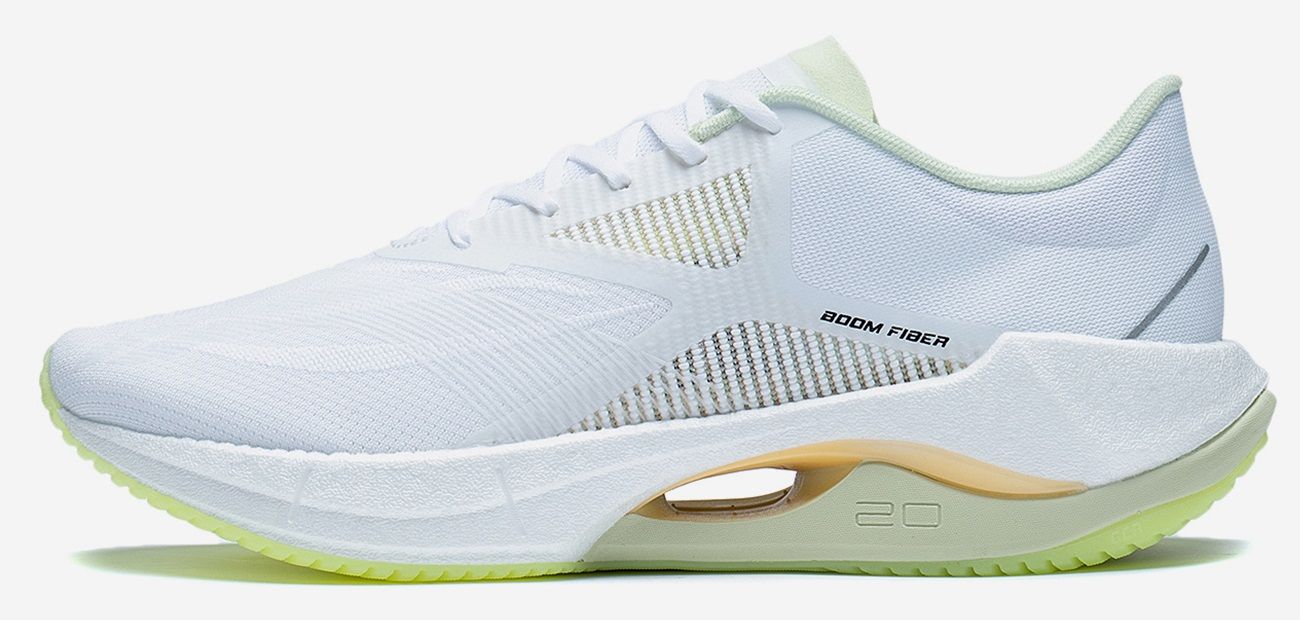
Protective membranes and impregnations in best running shoes
For running in rainy and snowy weather, the upper is sealed in one of two ways:
- DWR is a water-repellent impregnation that is applied to the nylon upper and protects it from moisture. Different manufacturers have their own markings: WTR for Puma, Shield for Nike, RunShield for Saucony. Best marathon shoes have protective membranes as well given athletes have to run in diverse weather conditions.
- Gore-Tex is a proprietary membrane, which is a fabric insert between the outer layer of the upper and the lining (the inner layer of the sneaker). The insert has pores with a diameter smaller than a drop of water, so it does not allow moisture to enter the shoe (waterproof), but allows air to pass through (vapor permeability).
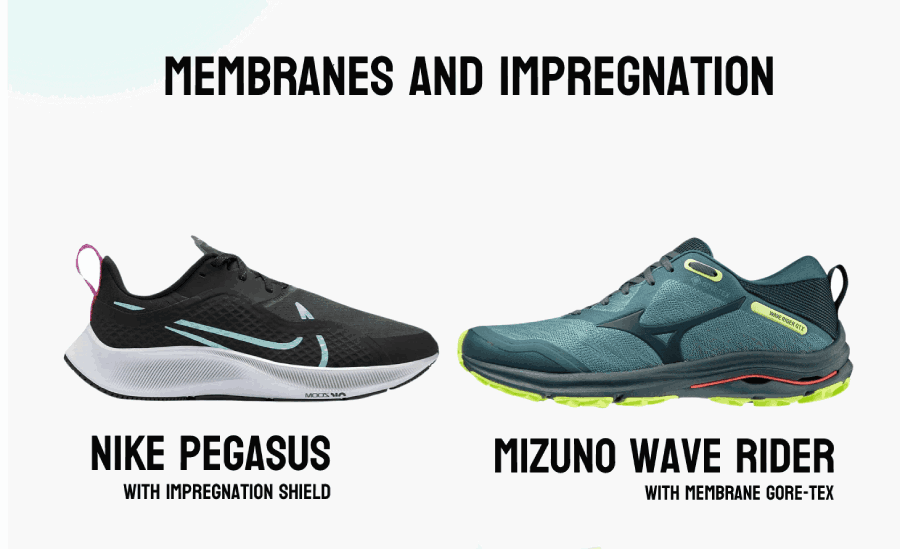
Protective membranes and impregnations on jogging shoes require careful care:
* cannot be washed in a washing machine;
* can only be cleaned with special cleaning agents (foams);
* cannot be dried on a radiator, only at room temperature;
* electric dryers can only be used ultraviolet, not heated.
Sneakers with membranes are best used in cold weather, so that the feet do not overheat: in summer in rainy weather, the feet will be hot, as the manufacturer has not yet been able to bring the index of vapor permeability to the desired level. In sneakers with impregnations, the foot breathes a little better, so they are suitable for running in warm weather.
An aspect often overlooked when discussing shoe technology is the midsole and outsole technology involved in managing the force of foot strike. These components are designed to absorb impact and provide a stable platform, reducing stress on the joints and contributing to a smoother, more efficient run (so called motion control shoes). Utilizing shoes with advanced cushioning materials and designs can improve your energy return, offering that springy step that makes running less taxing on the body.
Heel cup
The heel cup is a crucial component of running shoes as it plays a significant role in securing the heel inside the shoe, providing stability and promoting safe running. Training shoes and models with additional foot support often incorporate a rigid heel cup with plastic inserts to ensure proper support.
In contrast, competition shoes feature a softer heel cup. However, it is essential to prepare the foot for such shoes through strength training, plyometric exercises, jumping exercises, and running uphill. The focus on weight reduction and the inclusion of a carbon plate can have negative effects on a runner's performance if they have errors in their running technique or weak muscles.
Jogging shoes have evolved into sophisticated tools that cater to specific conditions and goals. While it used to be possible to buy any model without much concern, it is now essential to carefully consider the choice of good running shoes. The correct selection of stability running shoes not only affects comfort but also ensures safety during running. If uncertain, it is recommended to read running shoes reviews or ask for advice from experienced runners.
When selecting shoes, it is crucial to consider your arch type, whether you have flat feet, high arches, or neutral arches, as this will influence the type of support you require. Types of running shoes that specifically designed for your arch type will provide better alignment and support, reducing the risk of injury. Take your time trying on standard or low drop running shoes under real conditions, such as running on a treadmill or in the store, if allowed, to get a true feel for how the shoes align with your unique gait.
Cushioning and responsiveness are significant features that vary among different types of running shoes. The technology used in the midsole and outsole of the shoe determines its energy return and durability. Conducting a foot strike analysis can help determine the level of cushioning that suits your needs.
For individuals with concerns about pronation and supination, stability shoes with midsole support structures may offer additional correction. Meanwhile, runners seeking a more natural foot movement may opt for minimalist shoes with lower levels of cushioning, while if someone looking for best running shoes for overpronation - they may prefer a more unique heel cup model.
Running shoes care and maintenance
According to running shoes reviews care and maintenance are key to extending the life of your shoes. Proper care includes cleaning methods suitable for your shoe’s materials, such as avoiding machine washing for Gore-Tex lined shoes, and storing them properly to maintain their shape.
It's paramount to follow the manufacturer's instructions to ensure your shoes retain their functionality over time. Steps such as cleaning debris from the soles, washing insoles separately, and allowing shoes to air dry can significantly extend their usefulness and contribute to a consistent running injury prevention strategy.
Bear in mind that shoe lifespan and replacement is an important consideration. For example, road running shoes typically have a performance life ranging between 300-500 kilometers, after which they may lose some shock absorption qualities and should rather be used for less demanding training to prevent running injuries.
Regarding shoe lifespan and replacement, it’s recommended to keep track of the mileage you rack up on your shoes. This knowledge, combined with understanding how cushioning deteriorates over time, will inform when to replace your running shoes before they stop providing the necessary support and increase the likelihood of injury.
One of the best ways to ensure an accurate fit is through gait analysis, which can reinforce or dispel any assumptions you might have about your running shoe types preference. Through gait analysis, specialists can determine whether a runner is prone to pronation or supination, thus recommending the right stability, neutral, cushioned, or minimalist shoes.
Unfortunately, even with the best-fitting shoes, runners aren't completely immune to injuries. Therefore, incorporating running injury prevention strategies into your training—such as strength exercises for lower-body muscles, appropriate warm-up and cool-down routines, and gradually increasing running intensity—can be beneficial.
Lastly, don't underestimate the value of getting expert opinions or regularly trying on top running shoes. Retailers specializing in running gear often have knowledgeable staff who can give advice tailored to your needs. And remember: even the most advanced running shoes require proper shoe care and maintenance. Keeping your shoes clean, dry, and in good condition will ensure that they continue providing the best performance and protection for as long as possible.
Conclusion
Remember that every runner is unique, and what works for one may not necessarily be the best fit for another. Gait analysis plays a fundamental role in identifying your individual needs and motion control shoes. This analysis, sometimes provided by running speciality stores, can give insights into your arch types and pronation patterns, which are vital in selecting the correct running shoe type for your training or competition.
Shoe technologies like the carbon plate have become more prevalent, offering not just performance benefits but also influencing the shoe lifespan and replacement cycle. While carbon plates add to the propulsion and energy return of a run, they do eventually lose their effectiveness, signaling a time for replacement to avoid injuries from inadequate support.
While technology continues to evolve in creating better-performing good running shoes, the industry hasn't lost sight of key essentials such as durability. Every runner should consider the balance between cutting-edge features and the shoe's longevity when considering their next purchase.
In conclusion, much like a trusted training partner, the right running shoes become an integral part of your journey. The vast array of technologies, combined with your personal requirements, means it's crucially important to be thorough when selecting and trying on running shoes. In doing so, you'll ensure that every stride towards your goals is taken with the right support, safeguarding against injuries and making each run a testament to the power of a well-chosen pair of sneakers.